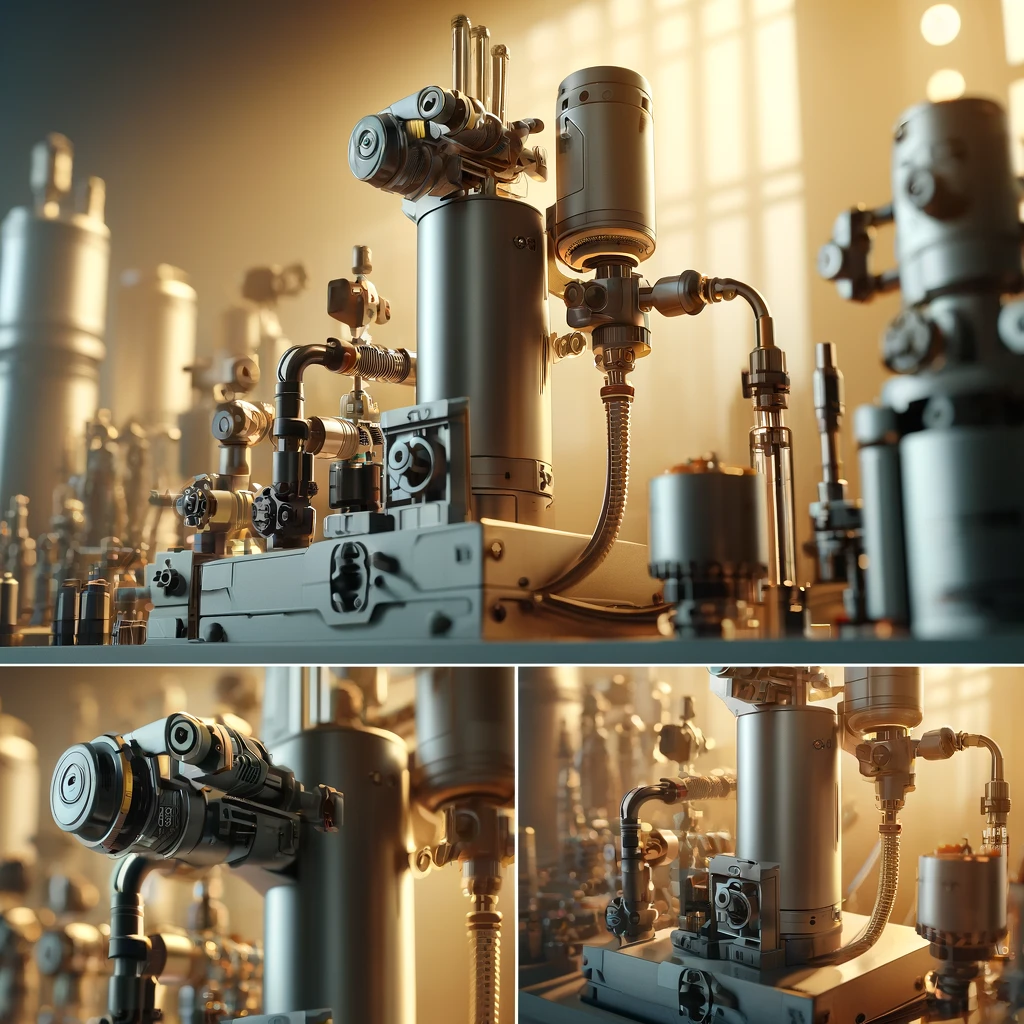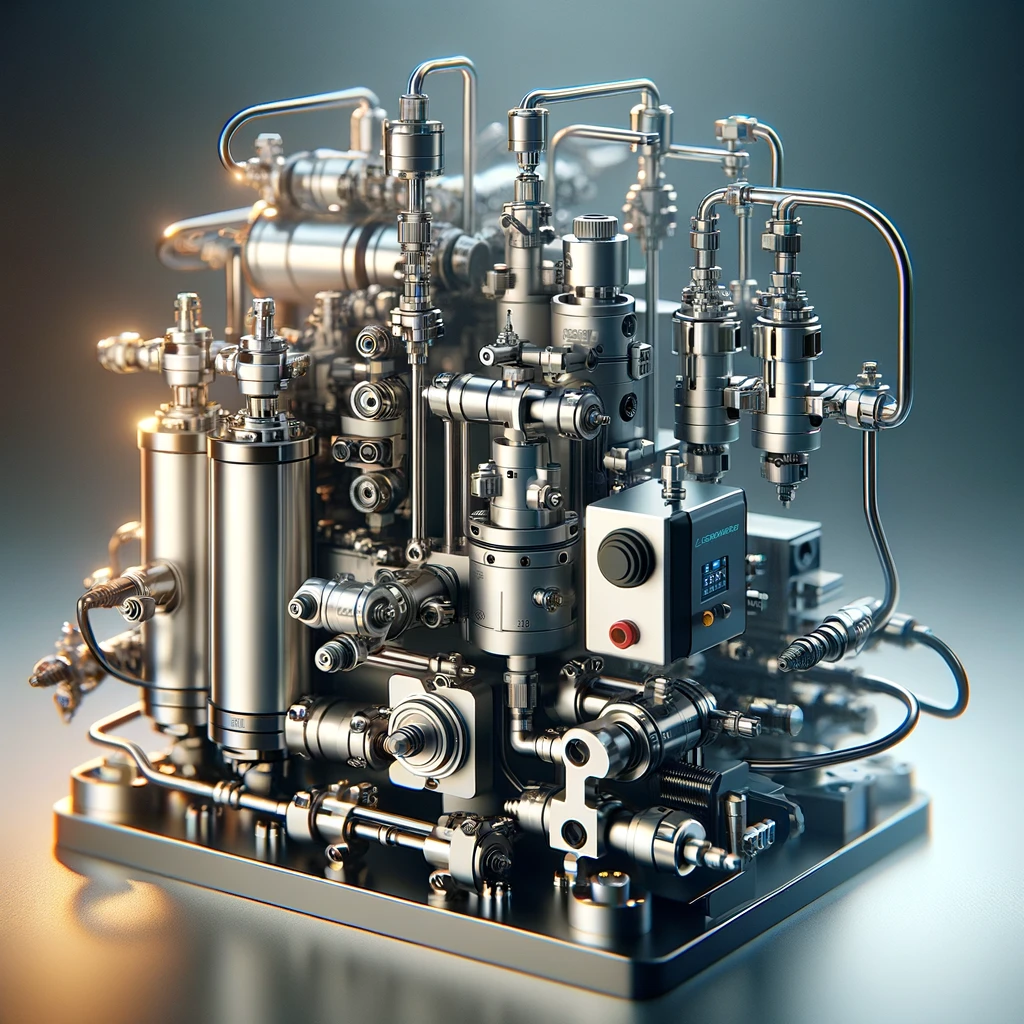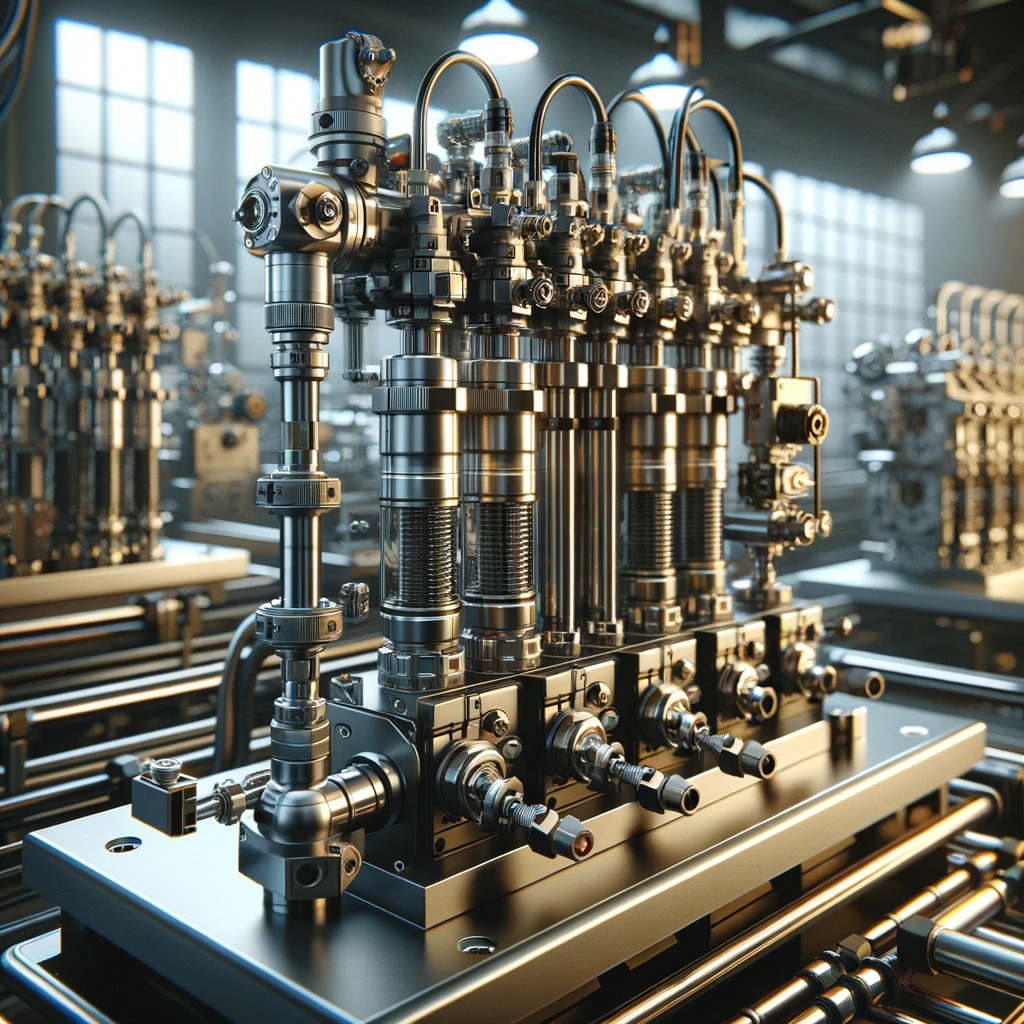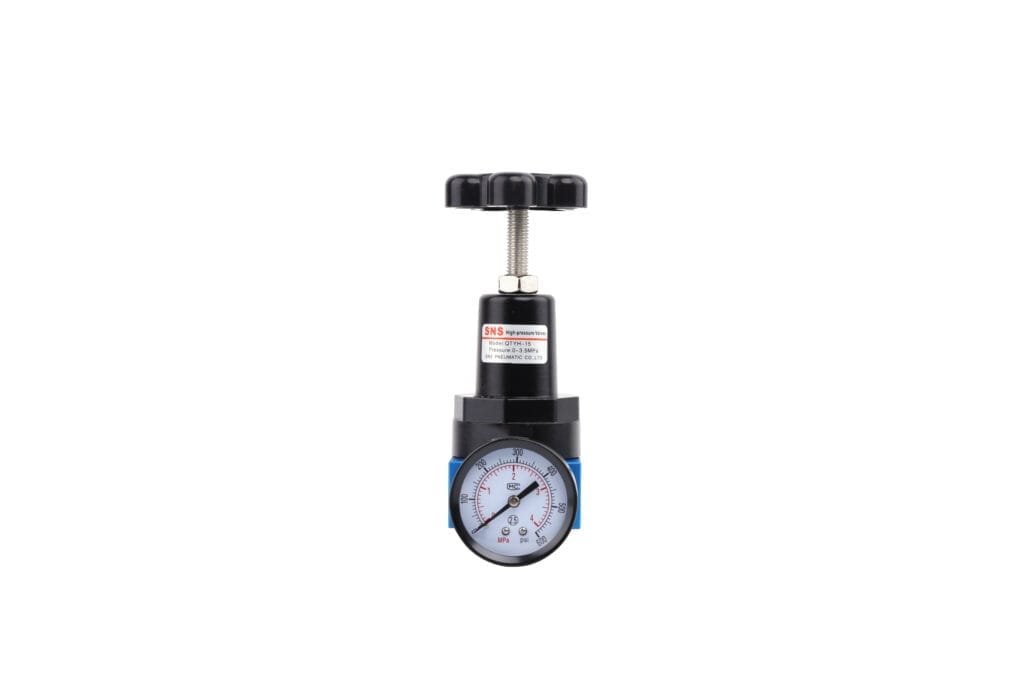What Is A Pneumatic System
A pneumatic system utilizes compressed air to operate machinery and tools, ranging from air-powered drills to automated production lines. It incorporates components like air compressors, filters, and regulators to manage air flow accurately and efficiently.
Pneumatic systems are crucial in numerous sectors due to their speed, reliability, and versatility. This introduction will explore how these systems use compressed air, their components, and their applications in various industries.
Key Takeaways
- A pneumatic system utilizes compressed air to perform mechanical tasks.
- It includes components like air compressors, filters, regulators, and pneumatic cylinders.
- The system converts compressed air energy into mechanical motion efficiently.
- Pneumatic systems are versatile, used in various industries for automation and machinery operation.
- They offer advantages like cost efficiency, simplicity, and minimal maintenance requirements.
What Is A Pneumatic System
Pneumatic systems use compressed air to power machines and tools in various places like factories, workshops, and dental offices. Essentially, these systems take stored energy from compressed air and turn it into mechanical action, allowing things to move or rotate. Because of their speed and accuracy, they’re vital for many industrial tasks.
The process begins by making sure the air is clean and dry, which is crucial to prevent damage to the system’s parts such as cylinders and tools. Some systems also add a fine spray of oil to reduce wear and tear on these moving parts, making the system last longer and work more smoothly.
What Is The Main Function Of Pneumatic System?
Pneumatic systems use compressed air to do work. They capture air, move it, and then use it to power things. These systems are found in both manual and automated machines, making them very versatile.
In manual machines, they make hard tasks easier. They use air to do things like lift, push, or pull, which saves effort and makes jobs safer.
Automated machines use pneumatics for accuracy. They help control machinery precisely, which is crucial for making sure things are consistent in production lines. The construction industry benefits greatly from these systems. They power tools and equipment needed for building and tearing things down, showing they can work well even in tough conditions.
How Does The Pneumatic System Work?
Pneumatic systems work by using compressed air to perform tasks, such as lifting, pushing, or pulling objects. The main component in these systems is the pneumatic cylinder, which is essentially a tube containing a piston. The process starts when compressed air is sent into this cylinder.
Here’s a step-by-step breakdown:
- Compressed Air: First, compressed air enters the cylinder through tubes. This air is under pressure, which is key to how the system works.
- Piston Movement: Inside the cylinder, the air pushes against one side of the piston. This pressure causes the piston to move.
- Task Performance: The movement of the piston is then used to do work, such as moving or lifting something.
Gases Used In Pneumatic Systems
Nitrogen stands out as the primary gas used in pneumatic systems due to its non-reactive nature. This key feature makes it a safe and reliable choice across various applications. It can be stored easily in both large tanks for extensive systems and smaller canisters for compact setups, enhancing its adaptability.

Pneumatic System Components
- Air Compressors or Pressurized Tanks: Capture air from the environment and compress it, preparing it for use in the pneumatic system.
- Filters: Act as bouncers, only allowing clean air through by trapping dust and other tiny unwanted particles, ensuring the air is clean before it moves through the system.
- Regulators: Serve as dials that fine-tune the air pressure from the compressor to ensure it meets the system’s needs precisely.
- Fittings: The connectors that join different parts of the system together tightly, ensuring air is directed precisely where it needs to go without escaping.
- Pneumatic Tubing: Functions as highways for pressurized air, leading it to important components such as valves.
- Pneumatic Valves: Act like traffic cops, directing the flow of air and controlling its speed to perform various tasks within the system.
- Check Valves: Ensure air flows in one direction only, preventing any backflow.
- Orifices: Act as speed bumps, slowing down the air to better manage pressure.
- Pneumatic Cylinders: The muscle of the system, converting air pressure into the force needed for movement, whether pushing, pulling in a straight line, or rotating parts.
Types Of Pneumatic Systems
- Dilute-phase systems: Known for their flexibility, these systems transport powders or small particles at high speeds using a stream of gas, without requiring fine-tuning to the properties of the material being moved, making them versatile for many operations.
- Dense-phase systems: More selective and carefully adjusted to match what they’re moving, transporting materials at a lower speed to prevent system and material damage, often including boosters to clear blockages for smooth operation.
- Vacuum-based systems: Ideal for scenarios where material needs to go to one specific place, working by sucking items up from open containers, perfect for handling dangerous materials with minimal risk of leaks.
- Pressure-based systems: All-rounders that can move objects to various locations with diverter valves directing the flow, capable of handling heavier items and covering longer distances, with positive displacement blowers providing steady material movement.
History Of Pneumatic Systems
Pneumatic systems, which rely on air pressure to function, have a rich history dating back to ancient times. The groundwork for these systems was laid by Ctesibius of Alexandria in the 3rd century BCE. Although his original writings are lost, his innovations in using air, water, and steam pressure greatly influenced future technologies.
Following Ctesibius, Hero of Alexandria expanded on these ideas, documenting numerous air-powered devices. His work suggests he built upon Ctesibius’s foundations. These ancient contributions were so impactful that they later inspired Renaissance inventors to create the thermoscope, a precursor to modern temperature measurement tools, utilizing the principle of air expansion and contraction.
The evolution of pneumatic systems took a significant leap in the 17th century with Otto von Guericke. He invented the vacuum pump, a breakthrough that demonstrated the potential of air pressure. This invention marked a turning point, leading to the development of the sophisticated pneumatic systems we see today, which are integral in various machinery and technology applications.
Pneumatic Systems Vs. Hydraulics Systems
You’ll find that pneumatic systems utilize pressurized air or gases to provide fluid power, while hydraulic systems rely on pressurized liquids like oil or water for the same purpose. Each system offers unique advantages and faces specific disadvantages, influencing their suitability for different applications. This comparison sheds light on the operational efficiencies, cost implications, and application versatility of pneumatics and hydraulics.
Advantages Of Pneumatics Systems
- Cost-Efficiency and Simplicity: Pneumatic systems are less expensive to set up and run compared to hydraulic ones, thanks to their design that uses air to operate, avoiding costly fluids or extensive mechanical components.
- Minimal Maintenance: With fewer moving parts, pneumatic systems are less likely to break down, requiring minimal repairs. This simplicity ensures reliable, consistent performance without frequent issues.
- High Speeds and Forces: The compressibility of air allows pneumatic systems to move quickly and exert significant force, making them suitable for a wide range of applications.
- Safety: Since pneumatic systems use air, the risk of fire is significantly lower than in hydraulic systems, which rely on flammable fluids. This feature makes pneumatics a preferable choice in environments where minimizing fire hazards is crucial.
Disadvantages Of Pneumatic Systems
- Precision Control and Speed: Achieving precise control and speed in pneumatic systems is challenging due to air’s compressibility, necessitating additional tools for effective management.
- Durability: Pneumatic systems are vulnerable to moisture accumulation, which can freeze in cold conditions and cause malfunctions.
- Safety: The pipes carrying air can move unexpectedly, posing a risk of accidents and serious injuries to individuals nearby.
- Environmental Impact: Conditions such as dampness can lead to system failures over time. Pneumatic systems cannot operate underwater, and they are sensitive to temperature changes and vibrations.
- Noise: Actuators within these systems generate significant noise, sometimes requiring isolation in specialized areas to mitigate sound levels.
Advantages Of Hydraulics Systems
- Compactness: Known for being small and light, hydraulic systems easily fit into various machines and devices without adding unnecessary bulk or weight, a significant advantage where space is at a premium or mobility is required.
- High Stiffness and Precision: Maintain their shape and position under pressure, ensuring accurate performance. Coupled with fast response to controls, they are ideal for timing-critical applications.
- Large Driving Force: Capable of generating substantial power, hydraulic systems are well-suited for heavy lifting or moving large loads directly.
- Wide Range of Speed Controls: Offers flexibility with precisely adjustable speeds to match the task at hand, from very slow to very fast movements.
- Self-Lubricating and Self-Cooling Features: Contribute to a longer lifespan by minimizing wear and tear, reducing the need for frequent maintenance.
- Designed with Safety in Mind: Often equipped with various security features to protect against operational failures, making them a safe choice for many applications.
Disadvantages Of Hydraulics Systems
- Vulnerability to Contamination: Hydraulic systems can be significantly impacted by tiny particles of dirt or other contaminants in the fluids they use, reducing efficiency and leading to costly repairs.
- Temperature Fluctuations: Their performance can drop in extreme temperatures, making them unreliable in varying environmental conditions and potentially requiring additional temperature control systems.
- Leaks: Even minor leaks not only waste hydraulic fluid but can also create safety hazards, like slippery surfaces or fire risks if the fluid is flammable. Detecting and fixing leaks is often challenging and expensive.
- Complexity: The design and manufacturing of hydraulic systems are complex, requiring precision in components and high-quality materials, making them more expensive and leading to longer development times.
- Limited Energy Transmission Over Long Distances: Hydraulic energy significantly drops in efficiency over long distances, limiting its use to applications where power is needed close to the source.

Application Of Pneumatic System
- Manufacturing of Machine Tools: Pneumatic systems are fundamental, powering a wide range of machinery and processes in the manufacturing world, ensuring tasks are carried out with precision and efficiency for reliable production lines.
- Automotive and Appliance Production: Utilized in the production of cars, household, and commercial appliances, pneumatic systems contribute to precision and efficiency, resulting in highly reliable production lines.
- Food Processing, Chemicals, Textiles, Paper, and Petrochemical Industries: Equally vital across these sectors, pneumatic systems support numerous processes, making the workflow smoother and easier to manage, highlighting their versatility and indispensability.
- Automation and Industrial Robots: Key to the operation of industrial robots, performing tasks such as packing, filling, drilling, stamping, punching, hoisting, and clamping, making pneumatic systems a critical component in manufacturing and assembly lines.
- Plastics Industry: Benefits greatly from pneumatic systems, allowing for precise control over plastics machinery, essential for producing high-quality plastic goods, indicating the significant role of pneumatic technology in ensuring smooth operation and high output quality.
Common Pneumatic System Issues
- Operating Pressure Problems: Occur when the pressure is either too low or too high, due to improperly set or malfunctioning pressure regulators. Low pressure leads to underperformance, while high pressure can damage equipment.
- Voltage and Power Issues: Stem from inconsistencies or failures in the electric motor powering the compressor, often due to electrical supply issues, affecting the reliability of the entire pneumatic system.
- Impact of Environmental Factors: Extreme temperatures, high humidity, or excessive dust can degrade air quality, causing wear or failure of components. Filters and rigorous maintenance are essential for system efficiency.
- Challenges with Mounting: Incorrect mounting can cause misalignment and excessive vibration, reducing effectiveness and shortening the lifespan of pneumatic tools and machinery.
- Consequences of Poor Air Quality: Contaminants such as dust or moisture in the air supply can block or corrode internal parts, leading to malfunctions or part replacements, and increasing maintenance costs.
- Repercussions of Selecting Incorrect Components: Choosing wrong parts leads to compatibility issues, resulting in inefficiency and increased operational costs. Selecting components must consider factors like operating pressure, material compatibility, and environmental conditions.
What Are Pneumatic Systems Best Suited For?
They are especially useful for tasks that require rapid, repetitive actions. The reason behind this is the use of air, a resource that is both easily accessible and safe, allowing for mechanical motions without the complexity or mess of other systems. Pneumatic tools stand out for being easy to operate, long-lasting, and cost-effective when it comes to solving automation issues.
What Fluid Is Most Commonly Used In Pneumatics?
Compressed air is the primary fluid in pneumatic systems. Its widespread use is due to its easy availability and safety. Unlike other substances, compressed air doesn’t pose a risk of combustion or harmful chemical reactions, making it a safe choice for various applications.
In some cases, nitrogen or other inert gases are used instead of air. These gases are chosen for their special properties, like purity and non-reactivity, which are essential in environments where oxygen could cause oxidation or unwanted chemical reactions.
Conclusion
In essence, pneumatic systems provide a powerful, clean, and efficient method for powering machinery and tools across a wide range of industries.
Explore the wonders of pneumatic systems further and discover how they can revolutionize your operations. Contact us today to learn more and take the first step towards unlocking their full potential in your workspace.



